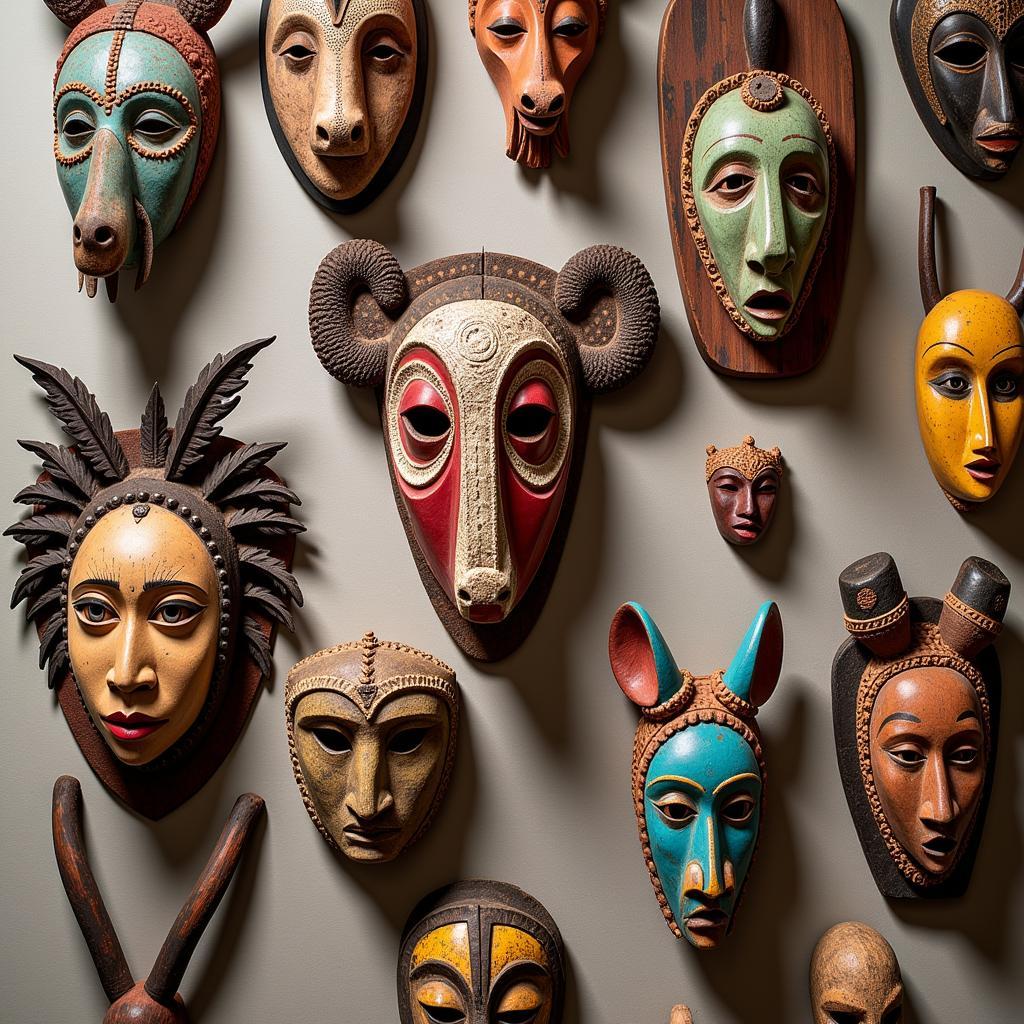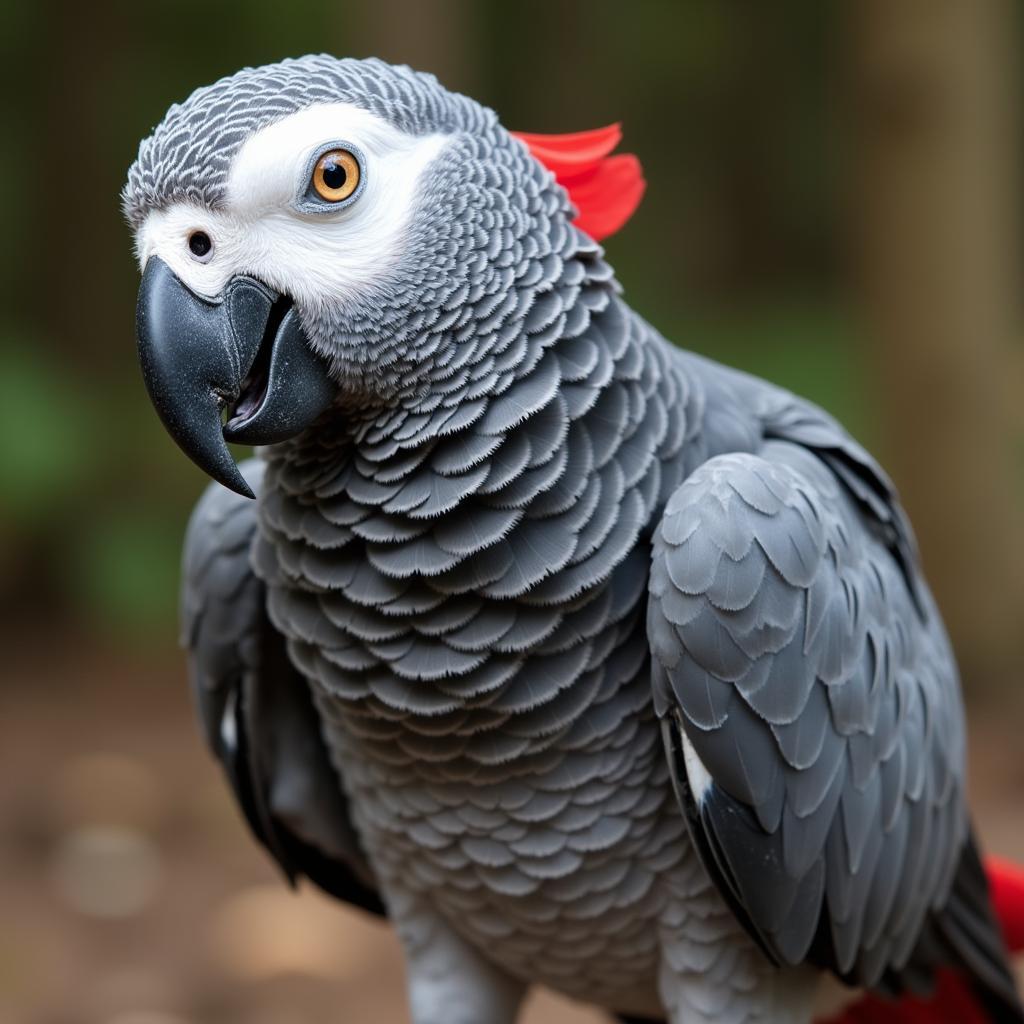Unraveling the Mystery: Which African Big Cat With Spots Reigns Supreme?
Africa, a continent teeming with diverse wildlife, is renowned for its majestic big cats. Among them, the “African Big Cat With Spots” immediately sparks curiosity. Which feline marvel are we talking about? Let’s delve into the captivating world of Africa’s spotted predators and uncover the secrets behind their iconic markings.
Africa’s Spotted Superstars: Unveiling the Contenders
When we think of an “African big cat with spots,” two magnificent creatures often come to mind: the leopard and the cheetah. Though both sport a coat adorned with spots, they are distinct species with unique characteristics, hunting styles, and social behaviors.
The Leopard: Master of Stealth and Strength
The leopard (Panthera pardus) embodies the spirit of a stealthy hunter. Its rosette-shaped spots, smaller and more densely packed than a cheetah’s, provide excellent camouflage in dappled forest light and shadowy grasslands. This, coupled with a muscular build, allows leopards to ambush prey with deadly precision. They are incredibly strong for their size, capable of hauling kills larger than themselves up trees to keep them safe from scavengers.
The Cheetah: Built for Speed and Endurance
In stark contrast to the leopard’s stealth, the cheetah (Acinonyx jubatus) is all about speed. It holds the title of the fastest land animal, capable of reaching astonishing speeds of 70 miles per hour in short bursts. Its spots, solid and evenly distributed, help break up its outline as it sprints across open grasslands in pursuit of prey, mainly gazelles.
Beyond the Spots: Differentiating Between Leopard and Cheetah
While their spotted coats might cause initial confusion, a closer look reveals key differences between leopards and cheetahs:
- Body Structure: Leopards are robust and muscular with short legs, while cheetahs are slender and long-limbed, built for speed.
- Facial Markings: Leopards have distinctive tear-shaped markings beneath their eyes, absent in cheetahs. Cheetahs, on the other hand, have prominent black “tear stripes” running from the corner of their eyes down to their mouths.
- Social Behavior: Leopards are solitary and territorial, while cheetahs are more social, often living in groups called coalitions.
- Hunting Techniques: Leopards are ambush predators, relying on stealth and surprise. Cheetahs are coursing predators, chasing down their prey with lightning speed.
The Elusive Serval: A Smaller Spotted Cat of Africa
While the leopard and cheetah often steal the show, there’s another spotted feline inhabitant of Africa worth mentioning: the serval (Leptailurus serval). Smaller than its larger cousins, the serval is easily identified by its long legs, a short tail, and large, rounded ears. Its coat features bold spots and stripes, providing excellent camouflage in its preferred habitat of tall grasslands.
The Significance of Spots: More Than Meets the Eye
The spots on these African cats are more than just aesthetically pleasing; they play a crucial role in their survival:
- Camouflage: The spots break up the cat’s outline, making it harder for prey to see them approaching and for predators to spot them hiding.
- Individual Identification: Just like human fingerprints, no two cats have the same spot pattern, allowing researchers to identify individuals in the wild.
The Future of Africa’s Spotted Cats: A Call for Conservation
The survival of these magnificent animals is increasingly threatened by habitat loss, human-wildlife conflict, and poaching. Conservation efforts are crucial to ensure that future generations can marvel at the sight of these spotted wonders roaming the African plains.
How You Can Help
- Support organizations dedicated to African wildlife conservation.
- Spread awareness about the threats facing these animals.
- Choose sustainable tourism options that prioritize wildlife protection.
FAQ: Common Questions About African Big Cats with Spots
1. What is the difference between a leopard and a jaguar?
While similar in appearance, leopards are found in Africa and Asia, while jaguars are native to the Americas. Jaguars are generally larger and stockier than leopards, and their rosettes often have spots within them.
2. Can cheetahs roar?
Unlike lions, leopards, and jaguars, cheetahs cannot roar. They purr, hiss, growl, and even chirp!
3. Are servals good pets?
Servals are wild animals with specific needs that cannot be met in a typical home environment. It is not recommended to keep them as pets.
Explore Further
Interested in learning more about Africa’s incredible wildlife? Check out these related articles:
Need Assistance?
For any queries or assistance regarding African wildlife and tours, please feel free to reach out:
- Phone: +255768904061
- Email: kaka.mag@gmail.com
- Address: Mbarali DC Mawindi, Kangaga, Tanzania.
Our dedicated customer support team is available 24/7 to assist you.



